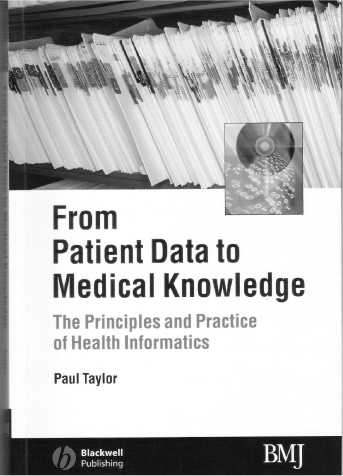
From Patient Data to Medical Knowledge: The Principles and Practice in Health Informatics is aimed at those who want to learn about how information technology is transforming the way we think about medicine and medical research.
The author, Dr. Paul Taylor, works in Centre for Health Informatics and Multiprofessional Education (CHIME) at the University College London (UCL). He is the director of the UCL postgraduate program in health informatics and has been running the program since 1999. He wrote this book on the basis of his long experience in teaching part-time students that mostly work in information or clinical roles in the National Health Service (NHS) or other health care organizations.
The prospective audience of this book is anyone who wants to learn to use information in health care: health professionals, hospital managers or IT specialists, etc. This book can be used as a textbook for a postgraduate course in health informatics.
The contents of this book consist of three parts.
Part 1 provides a broad introduction to the field of health informatics:
Part 2 deals with various techniques used in health informatics and the theory behind some of these techniques. This involves a brief introduction to the essential techniques used to represent clinical concepts in computer programs such as electronic health care records or decision support systems and obtain any value out of the representation:
Part 3 explores attempts to apply health informatics in practices. This includes implementation in clinical setting:
The greatest strength of this book lies in the practical examples which are drawn from health care organizations. While the overall content of this book is practical, a fundamental knowledge of information technology is required to understand the germane material completely.




 PDF
PDF ePub
ePub Citation
Citation Print
Print


 XML Download
XML Download